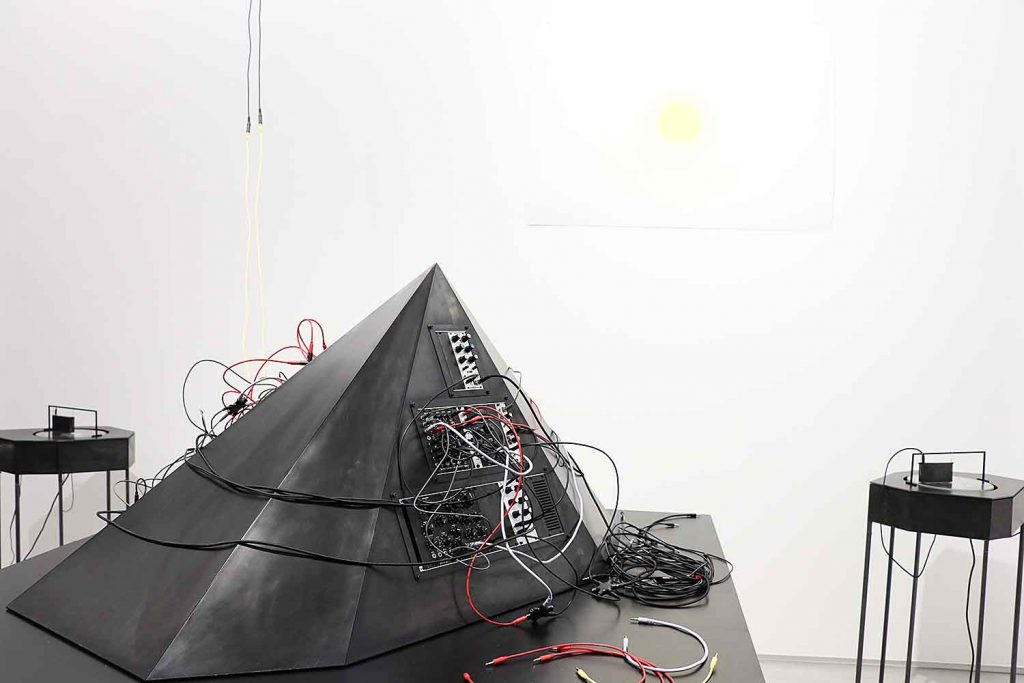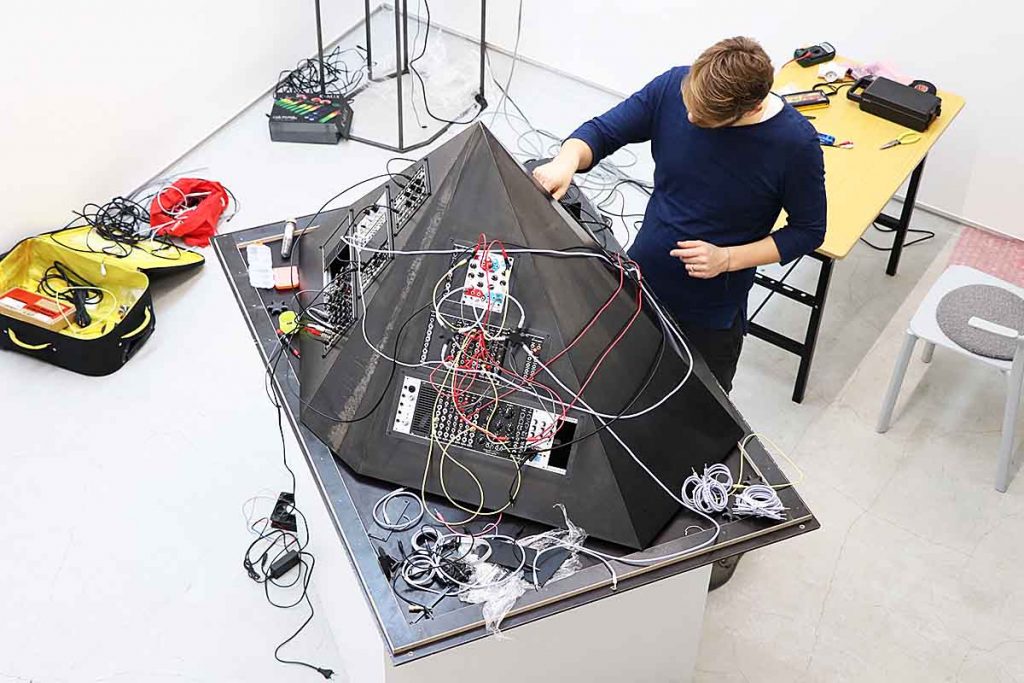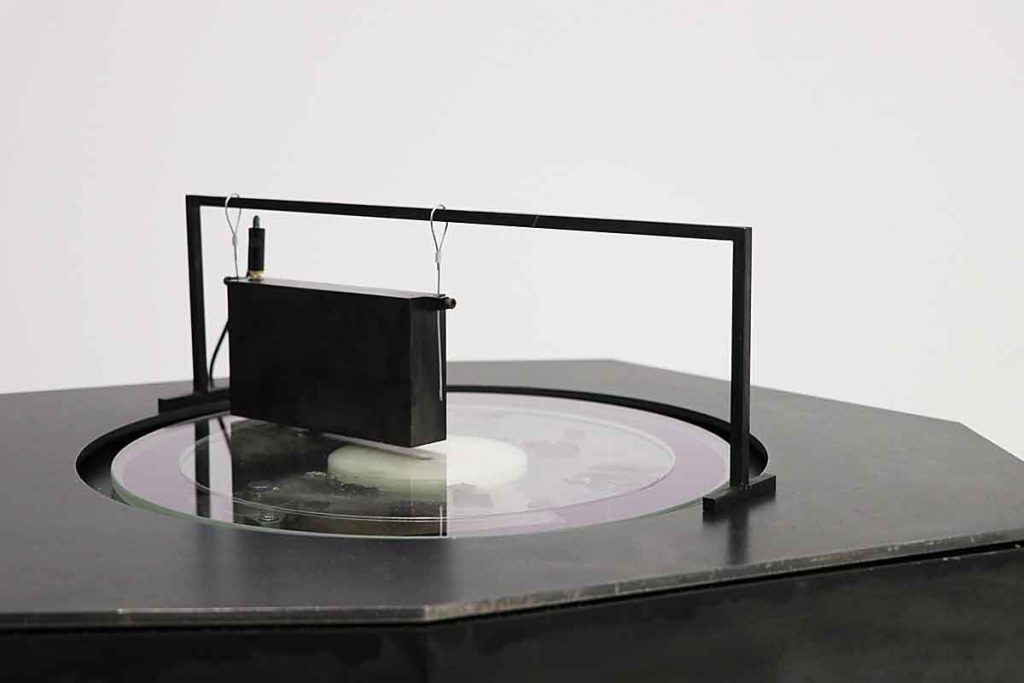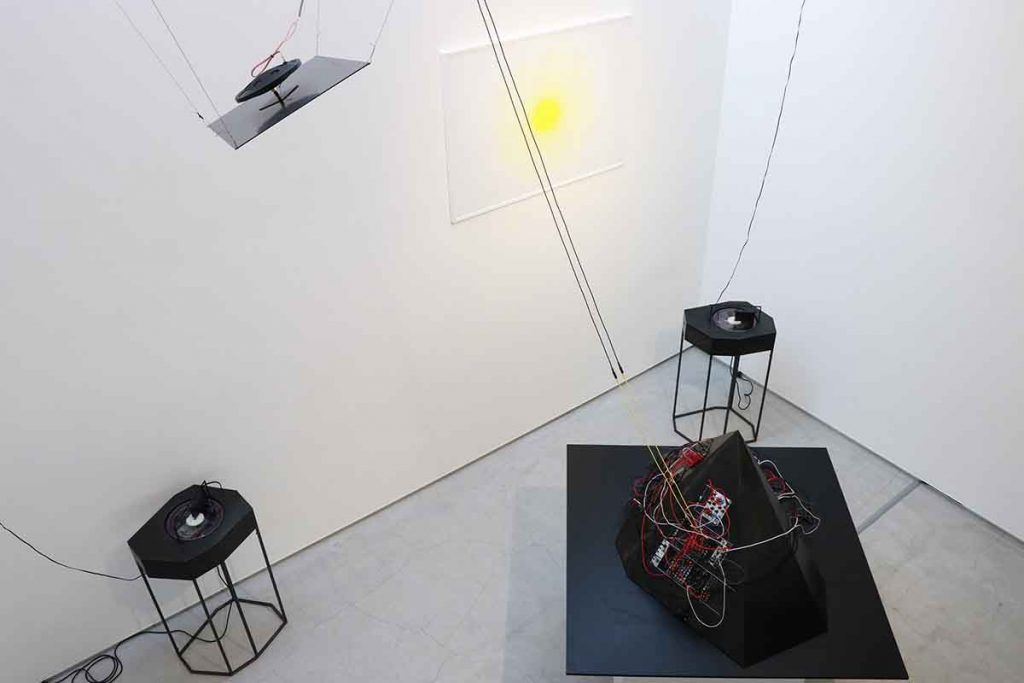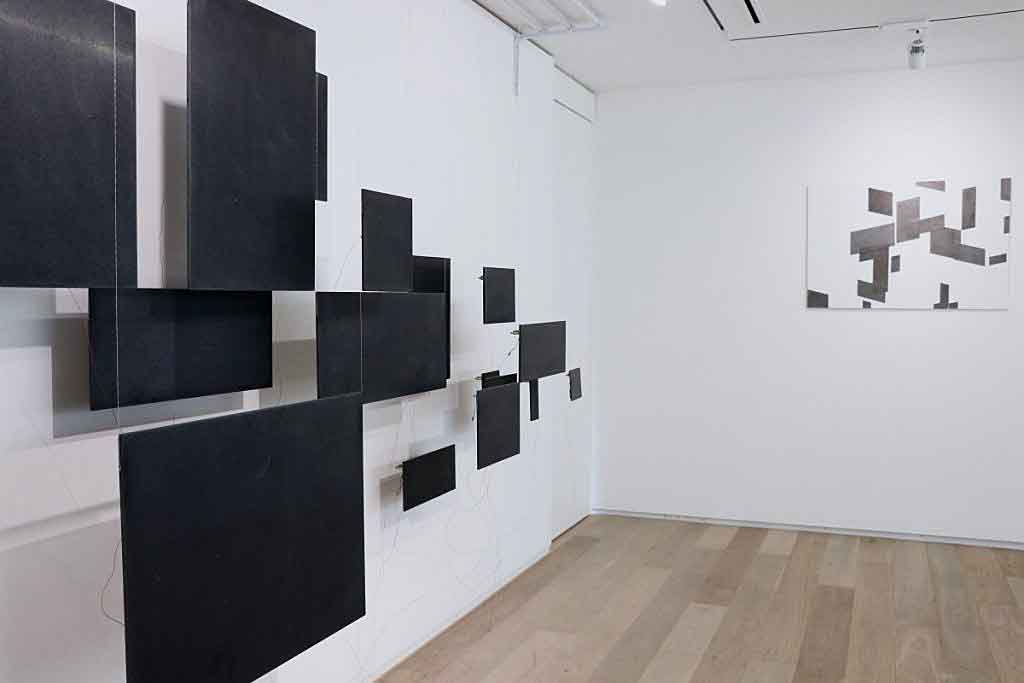EXHIBITIONS
Voldemārs Johansons [Uncertainty Drive]
- Information
- Works
- DATE
- 2017-10-25 [Wed] - 2017-11-18 [Sat]
- OPEN TIME
- 11:00-19:00
- CLOSE DAY
- Sun, Mon and Public Holidays
Voldemārs Johansons is a composer and contemporary artist living and working in Riga, Latvia. His installation works are precisely designed like experimental devices based on scientific research that employ sound, light and video to focus on the relation between human perception and the natural environment.
For example, ‘Op. 39 (standing waves)’ at the Riga Cathedral is a sculpture of steel pipes that looks like a pipe organ which stands in the cathedral courtyard. Various bass sounds are produced and changed by capturing the influences of the surrounding temperature, wind and the audience’ s standing position. ‘Thirst’ is a video and sound installation with an image of surging waves, which was filmed using a super high quality camera from a rock in the North Sea, screened with a panoramic screen. Accompanied by a powerful sound system and smoke machine, the audience can experience the overwhelming power of nature as if they were at the scene.
For his first exhibition in Japan, Johansons chose ‘Uncertainty’ as the theme. Ilya Prigogine, a physicist known for the theory of dissipative structures, stated that ‘instability and creativity are inherent in our world’ , further claiming that the laws of nature which are ‘unpredictable but not random’ have a significant influence on art and design, human creativity and imagination.
In Johansons’ new sound installation presented in the exhibition, a sample containing a trace amount of radioactive material is used. Radioactive substances emit radiation at the moment their nuclei collapse. The frequency of the probability of radioactive decay is determined by the type of substance, but the occurrence of the decay cannot be predicted. A Geiger tube in the work detects any unpredictable radiation emissions, and upon detection, an ‘instrument’ generates a sound in accordance of the live data. Invisible environmental changes in the exhibition space because of the radiation become audible through the artwork.
Radiation cannot be perceived by human senses, however, it exists in the natural environment in various forms and is used widely in fields such as energy, medicine and biotechnology. There have been a lot of discussions about the existence of nuclear weapons and nuclear power generation. And still it is lying in front of us as a big problem that we can not even see the path to resolving these issues.
Johansons’ work incites imagination as he seeks to enlighten audiences about elements that cannot be perceived, and is making us re-recognise that the situation we are facing is physically and socially complicated with various uncertain factors.
Cooperation/Support:
Embassy of Latvia in Japan
Voldemārs Johansons
Studied composition of electronic music at Royal Conservatoire, Instutute of Sonology, Den Haag, Netherlands. After graduation, he deepened his research on organic combination of acoustic, visual information and spatial forms, while engaged in a number of projects aiming for fusion of art, science and technology. He presents his works around the world as a contemporary artist, and also active as a composer and researcher. Johansons’ works have been presented at : the Venice Biennale of Architecture, Ars Electronica Center (Lintz), BOZAR (Blussels), Ruhr triennale (Germany), STEIM (Amsterdam), LISTE ART FAIR (Basel), The Latvian National Opera, Kochi Biennale (India) and elsewhere.
ARTIST PROFILE: Voldemārs Johansons





